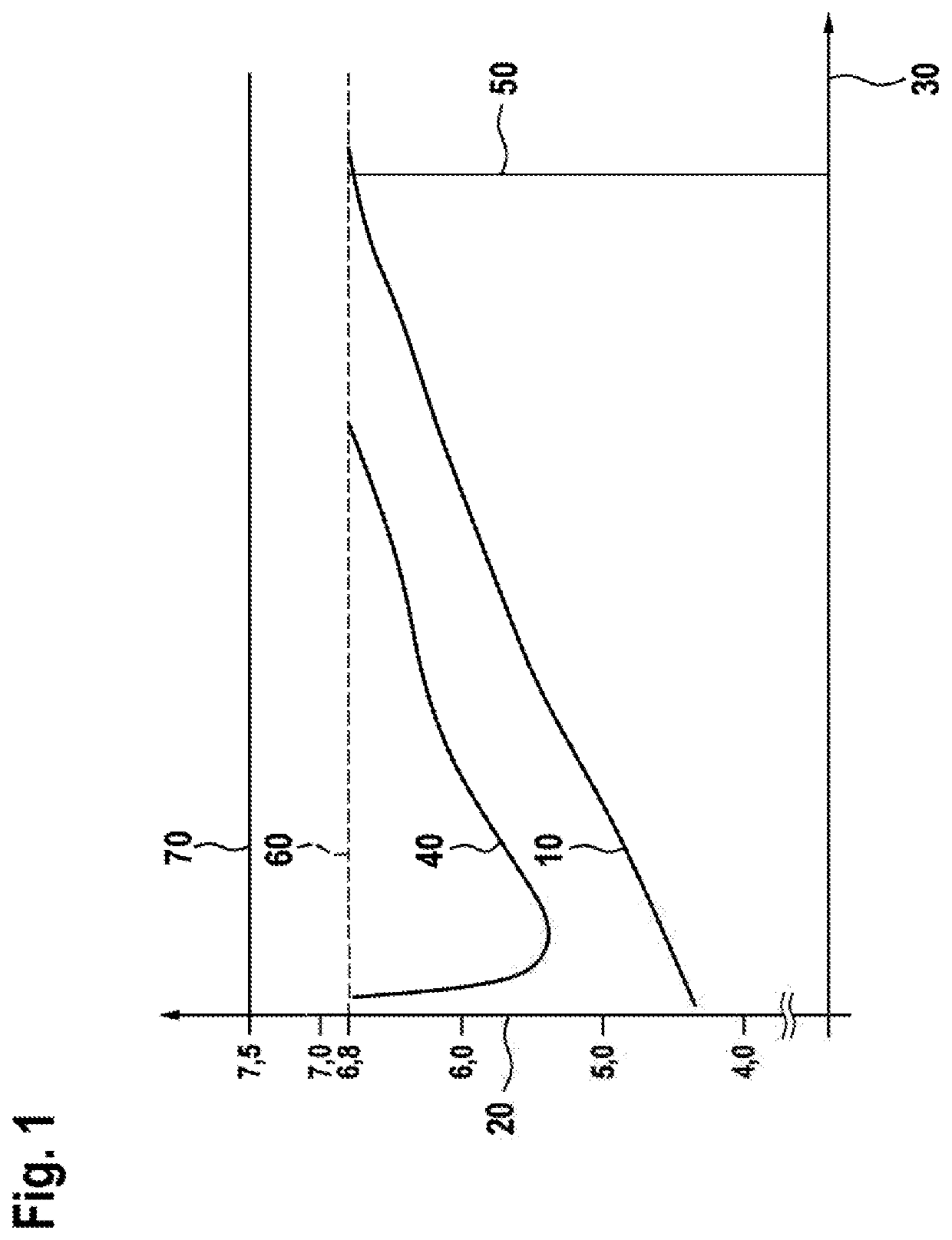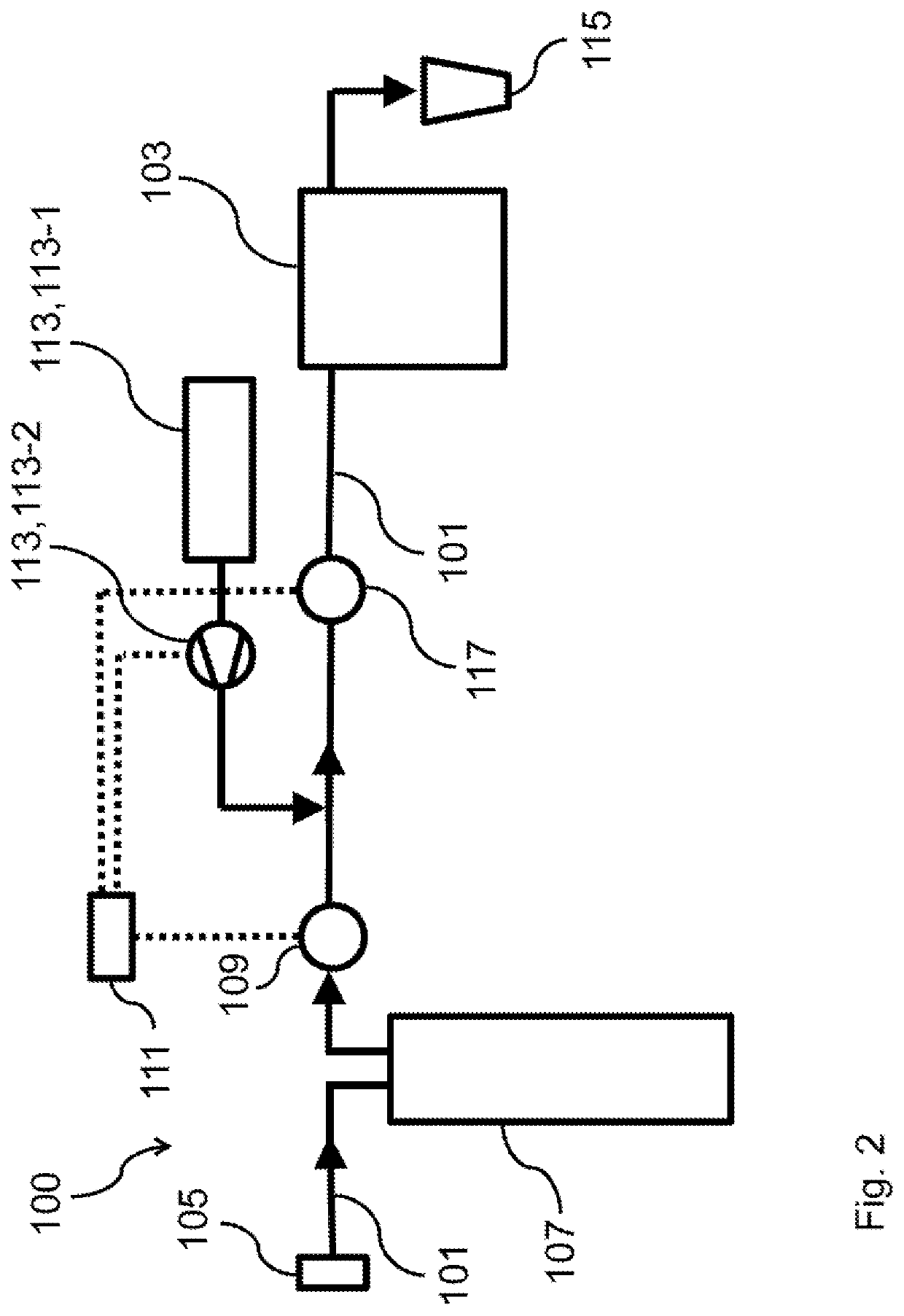Water-Hardness Reducing Apparatus for Reducing the Formation of Chalk Deposits in a Water Supply
- Summary
- Abstract
- Description
- Claims
- Application Information
AI Technical Summary
Benefits of technology
Problems solved by technology
Method used
Image
Examples
first embodiment
[0077]FIG. 2 depicts a water-hardness reducing apparatus according to the present invention. The water-hardness reducing apparatus 100 is adapted for reducing the formation chalk deposits in a water supply 101 adapted to be coupled with a beverage generating apparatus 103, in particular a coffee brewing apparatus or a tea brewing apparatus.
[0078]The water-hardness reducing apparatus 100 comprises a water source 105 of the water supply 101 for supplying water, such as tap water, or a tank filled with tap water. In particular the water source 105 is fluidically connected to a household water connection for providing a constant flow of water, in particular tap water, to the water supply 101.
[0079]The water-hardness reducing apparatus 100 further comprises a cation exchange element 107, which is in fluidic connection with the water source 105 of the water supply 101, wherein the cation exchange element 107 is adapted to remove cations, in particular alkaline earth cations, in particular...
second embodiment
[0111]FIG. 3 depicts a water-hardness reducing apparatus according to the present invention.
[0112]The water-hardness reducing apparatus 100 according to the second embodiment depicted in FIG. 3 correspond to the water-hardness reducing apparatus 100 according to the first embodiment depicted in FIG. 2, except that the water-hardness reducing apparatus 100 according to the second embodiment depicted in FIG. 3 comprises a magnesium supplying element 119, which is positioned downstream of the cation exchange element 107, and which is adapted to supply a magnesium ion containing solution to the cation reduced water. In particular, the magnesium ion containing solution comprises magnesium sulfate and / or magnesium chloride.
[0113]In this respect, it is mentioned that since calcium carbonate, i.e. chalk, has an approximately 20-times reduced solubility in water compared to magnesium carbonate, it is preferred to reduce the calcium ion concentration of the cation reduced water after cation e...
PUM
 Login to View More
Login to View More Abstract
Description
Claims
Application Information
 Login to View More
Login to View More - R&D
- Intellectual Property
- Life Sciences
- Materials
- Tech Scout
- Unparalleled Data Quality
- Higher Quality Content
- 60% Fewer Hallucinations
Browse by: Latest US Patents, China's latest patents, Technical Efficacy Thesaurus, Application Domain, Technology Topic, Popular Technical Reports.
© 2025 PatSnap. All rights reserved.Legal|Privacy policy|Modern Slavery Act Transparency Statement|Sitemap|About US| Contact US: help@patsnap.com



